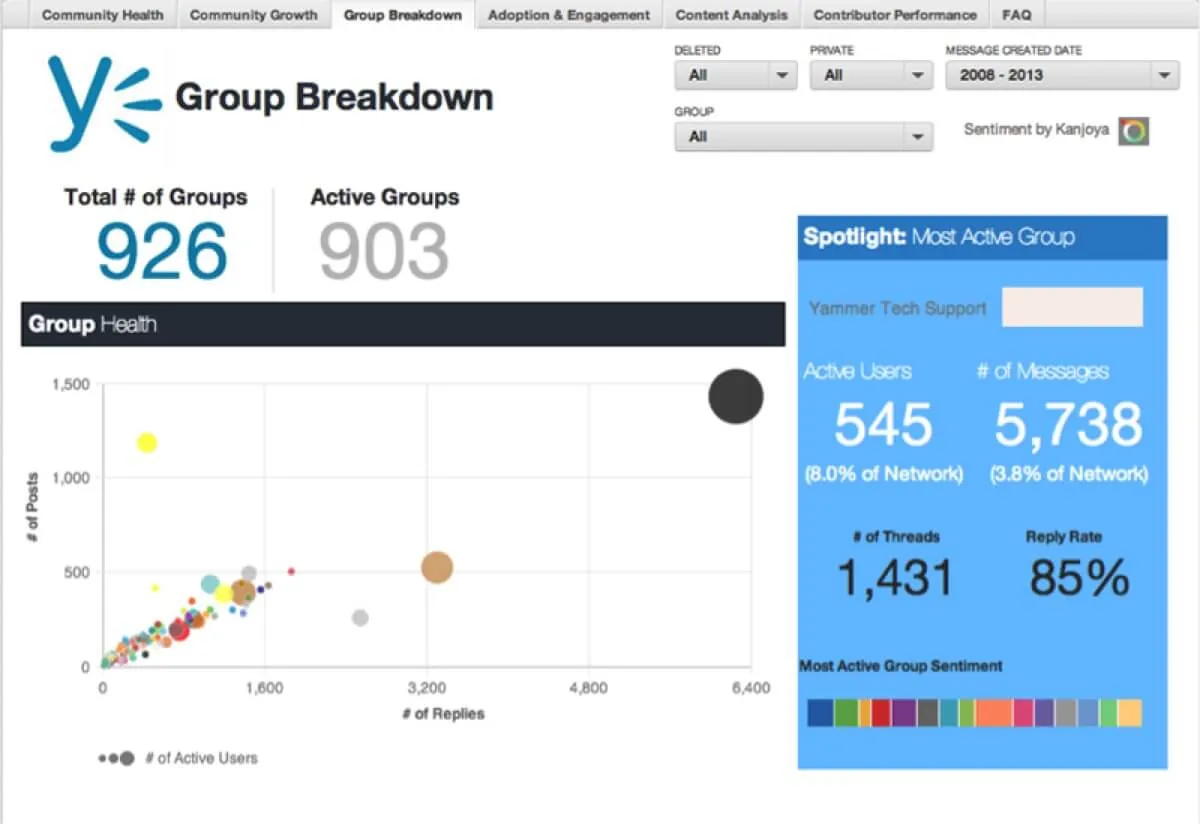Identify Top Performing Yammer Groups and Replicate Their Success [Checklist]
![Identify Top Performing Yammer Groups and Replicate Their Success [Checklist]](/img/generic/img-150-placeholder.webp)
![Identify Top Performing Yammer Groups and Replicate Their Success [Checklist]](/img/generic/img-150-placeholder.webp)
I recently wrote about KPIs that can help you achieve a 365% ROI on your Yammer investment. Now that you're tracking those metrics, what's next? Understanding adoption and engagement is important, but it is only a piece of the puzzle.
Groups are an essential part of the Yammer experience. These collaborative workspaces break down hierarchical barriers to help users get work done. Yammer Groups thrive when they have a clear business goal, the right membership and members receive proper training. By creating a group enablement and adoption strategy, Corporate Communication, HR, and IT can help drive engagement across all of Yammer as users who have a good experience with groups will ultimately be more active on the network.
In every organization there will be groups that use Yammer better than others. The challenge for most administrators is to identify highly-engaged groups and replicate their success company-wide. At the end of this post you'll find a downloadable checklist to help you do just that, but first you'll need to identify successful groups. We have found that benchmarking groups is a perfect way to identify successful outliers:

By arranging groups in the bubble chart above, you can pinpoint which groups are using Yammer most effectively and which groups are not. The metrics below help identify the likelihood of a group's success:
- Number of posts
- Number of replies
- The reply rate (percentage of threads with a reply)
- Minutes to first reply
There are key indicators as to whether a group is likely to be successful. For example, groups that start with a clear mission, appoint a champion to drive adoption and invite relevant users generally see more organic growth. Moreover, group administrators that move e-mail conversation to Yammer, post controversial topics and nudge users to participate in a conversation will see higher engagement levels. To help Yammer admins make Group success a more repeatable process, we've created this Yammer Group getting started checklist.
To make it more relevant and interesting for your company, try incorporating internal success stories. Once you've identified successful groups, ask a few of the questions below to the groups' admins and incorporate their responses into the Yammer Group getting started checklist.
- Did you have a clear goal when you started the group? What was it?
- How many people started in the group? How did that change over time?
- How did you launch your group?
- How did you train your users?
- How did you keep users engaged over time?
- How do you encourage conversation?
Then, host your Yammer Group getting started checklist in your Yammer best practices or training group for future group admins to download.
We'd love to hear your feedback. Is this a useful tool for helping you drive Yammer Group success? Let us know in the comments below or reach out to @gooddata on Twitter.
This is part two of a five part series on how your organization can use Yammer analytics to unlock the full potential of your Yammer investment.
Part 1: There's 365% ROI on the line. How solid is your Yammer investment?
Part 3: How to Discover Unanswered Questions in Yammer and Increase User Trust
Part 4: Uncharted Territory: How to Find Top Yammer Influencers and Champions
Part 5: How to Use Yammer to Measure Employee Morale and Sentimen
Experience GoodData in Action
Discover how our platform brings data, analytics, and AI together — through interactive product walkthroughs.
Explore product tours

